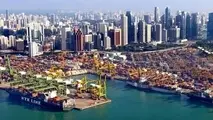Singapore Pushes Shipping to Adopt Cleaner Fuels
Singapore is pushing the shipping industry to use cleaner fuels such as liquefied natural gas (LNG) in a bid to reduce the city state’s carbon emissions, the Maritime and Port Authority’s (MPA) chief said on Friday.

Singapore is pushing the shipping industry to use cleaner fuels such as liquefied natural gas (LNG) in a bid to reduce the city state’s carbon emissions, the Maritime and Port Authority’s (MPA) chief said on Friday.
The country is introducing incentives for ships to install engines that use alternative fuels with lower carbon content such as LNG, and to use LNG bunker during port stay, MPA Chief Executive Officer Quah Ley Hoon said in a speech at an industry event.
“LNG is a cleaner and greener fuel and it is the only viable solution that is available at scale to the shipping industry (to reduce carbon emissions), so we will give it a bigger push,” she said.
Apart from some cruise liners, not many ships currently use LNG.
Incentives will include concessions on certain fees such as port dues, initial registration fees and tax, an MPA spokesman said.
Singapore is the world’s largest marine refuelling, or bunkering, hub.
The International Maritime Organization (IMO) has a long-term goal to cut greenhouse gas emissions by 50% from 2008 levels by 2050. New IMO rules that come into effect next year only limit sulphur content in marine fuels.
The MPA has co-funded building of two LNG bunker tankers in Singapore to facilitate ship-to-ship LNG bunkering for ocean going vessels from the third quarter of next year.
It has also awarded bunker supplier licences to FueLNG and Pavilion Energy, which have performed 150 truck-to-ship LNG bunkering operations so far.
The port authority is also preparing for the first simultaneous operation for LNG bunkering and cargo operations to take place next year.
Using LNG to power ships instead of fuel oil or marine gasoil can reduce emissions of nitrogen oxide and sulphur oxide pollutants by 90% to 95%.



